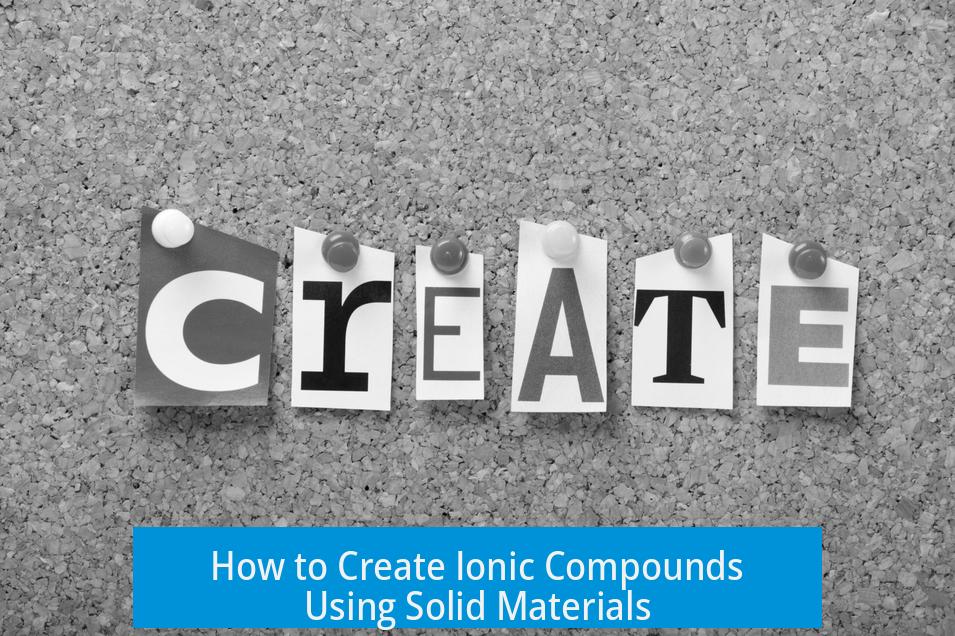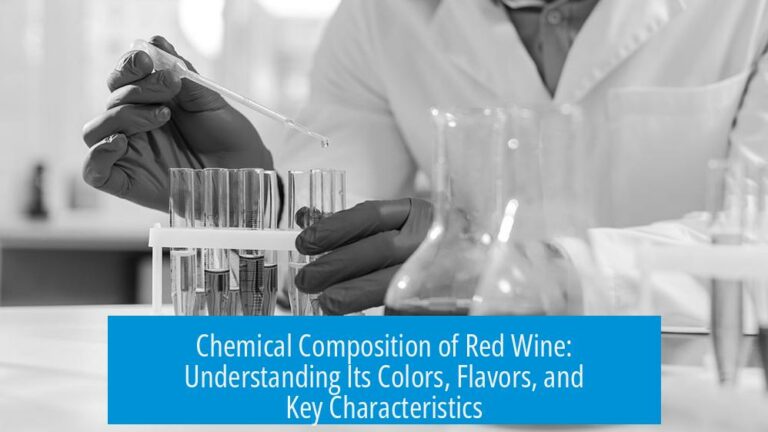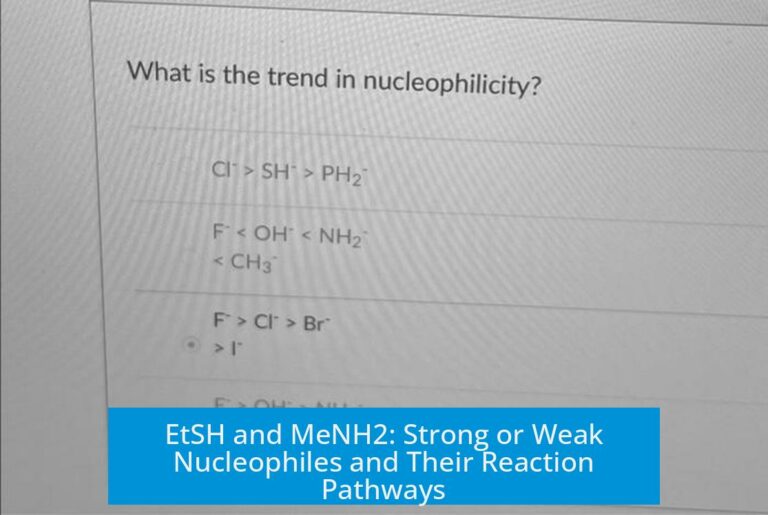How Does One Make Ionic Compounds with Solids?
Ionic compounds are formed by strong electrostatic forces between positive and negative ions, which create solid crystalline structures. The ionic bond is not between solid atoms but between charged ions arranged in a solid lattice. While the bonding results in solid salts, ionic compounds themselves consist of ionized atoms. Typically, ionic compounds form from reacting elements or ions in non-solid phases rather than directly from solids.
Understanding Ionic Bonds and Solids
Ionic compounds result from the attraction between positively charged ions (cations) and negatively charged ions (anions). These oppositely charged ions attract each other, creating a bond known as the ionic bond. The force that holds these ions together is electrostatic in nature, meaning it arises from the opposite electrical charges pulling on each other.
Most ionic bonds produce solid materials at room temperature. This solid form is due to the strength of the ionic interactions, which hold the ions tightly in an ordered crystal lattice. Such compounds are often called salts, with common examples being sodium chloride (NaCl) and potassium bromide (KBr).
The solid state does not mean the bonding occurs with solids. Instead, ionic bonds form between ionized atoms. Ions themselves are atoms or groups of atoms that have lost or gained electrons. In ionic compounds, these ions arrange in repeating units to make crystalline solids.
How Ionic Bonds Form: Electron Transfer
Ionic bonds usually form when a metal reacts with a nonmetal or a polyatomic ion. Metals tend to lose electrons and form cations—ions with a positive charge. Nonmetals tend to gain electrons and form anions, ions with a negative charge. This electron transfer allows both atoms to achieve full valence electron shells, which is energetically favorable and makes the ions stable.
For example, in sodium chloride, sodium (Na) has one electron in its outer shell while chlorine (Cl) has seven. Sodium donates one electron to chlorine, creating Na+ and Cl-. These ions attract each other and bond ionically. This arrangement forms a solid crystal at room temperature with a high melting point.
Why Ionic Compounds Are Usually Solids
Ionic bonds are strong and require significant energy to break. This strength leads to high melting and boiling points. Consequently, ionic compounds tend to be solid under normal conditions. Their structure, commonly a crystalline lattice, maximizes the attraction between ions and maintains a rigid solid form.
Many ionic compounds dissolve readily in water. Upon dissolution, water molecules surround and stabilize the separated ions. This hydration disrupts ionic bonds temporarily but does not destroy the ions themselves. When water evaporates, the ions can recombine, re-forming the ionic solid.
Can Ionic Compounds Form Directly from Solids?
The question about forming ionic compounds “with solids” often arises from confusion on how reaction phases affect ionic bonding. Ionic compounds do not form by bonding two solids directly. The process generally requires at least one reactant in a non-solid phase, either in solution or as a gas.
For example, to make sodium iodide (NaI), pure sodium metal and iodine must react, but this normally occurs with sodium heated and iodine sublimed or dissolved. Direct reactions between two solids without melting or dissolution are rare and difficult, happening mainly in specialized solid-state chemistry under controlled conditions.
Most textbook examples show ionic bond formation via electron transfer in gaseous atoms or in solution, emphasizing the importance of ion mobility and interaction before crystallization into solids.
The Role of Ionic Bonding within Solids
Within an ionic solid, the ions sit in a fixed, repeating three-dimensional lattice. Each ion experiences electrostatic forces from multiple neighboring ions, leading to a stable, ordered structure. This interaction is distinct from bonding between neutral atoms. The magnetic terms commonly used describe the attraction between these charged ions.
This lattice structure explains the physical properties of ionic solids, such as brittleness, high melting points, and electrical conductivity when molten or dissolved.
Challenges in Forming Ionic Compounds from Solid Reagents
Solid-state synthesis of ionic compounds can be challenging. Reactions between solid reagents require high temperatures or special conditions to enable ion diffusion and electron transfer. For typical laboratory or industrial processes, solutions or molten phases offer better ion mobility and reaction control.
For this reason, chemists prefer routes such as:
- Dissolving reactants in water to allow ions to combine and crystallize.
- Heating mixtures to melt and react ionic or metallic components.
- Using vapor phase or gas reactions for elemental combination.
Solid-state reactions exist but often involve different mechanisms like diffusion-controlled processes or solid-solid phase transitions rather than classic ionic bonding formation.
Disruption and Reformation of Ionic Bonds in Solids
Ionic bonds are strong but not permanent. When ionic solids dissolve in polar solvents like water, hydration shells form around each ion, reducing their attraction to opposing charges. This results in the dissociation of the crystal lattice.
Removing water allows ions to meet again and reassemble into the solid ionic compound by reforming ionic bonds. This reversibility shows the dynamic nature of ionic bonding under different environmental conditions.
Mistaken Views: Ionic Bonding vs. Metallic Bonding in Solids
It’s important to distinguish ionic bonding from metallic bonding. Metals such as copper form solid crystals but bonding involves delocalized electrons, creating a “sea of electrons,” different from ionic attraction between fixed charges.
Alloying metals and forming metallic compounds differ fundamentally from ionic compounds. However, both form solids and involve atom interactions producing distinct physical properties.
Key Takeaways
- Ionic bonding arises from electrostatic attraction between cations and anions.
- Ionic compounds are composed of ionized atoms arranged in solid lattices, not bonded solid atoms.
- Electron transfer between metals and nonmetals forms ions that combine into ionic solids.
- Ionic compounds typically form from at least one reactant in solution or gas phase, not directly from solids.
- Ionic solids have high melting points and strong ionic bonds but dissolve in water, which breaks bonds temporarily.
- Solid-state ionic reactions are possible but uncommon and require special conditions.
- Understanding ionic bonding clarifies why ionic compounds exist as solids with specific properties.
How do ionic bonds hold together solid ionic compounds?
Ionic bonds are electrostatic forces between oppositely charged ions. In solids, these strong attractions keep the ions tightly packed in a crystal lattice, making the compound solid and stable at room temperature.
Can ionic compounds be made by directly mixing two solid elements?
Usually not. Ionic compounds typically form when at least one reactant is in solution or gas phase. Direct solid-solid reactions are rare and not common in typical synthesis methods.
Why are ionic compounds solids rather than mixtures of solid atoms?
Ionic compounds are made of ions, not neutral atoms. The ions attract each other strongly, arranging into a solid crystalline structure. This ionic lattice gives rise to the solid state.
How does electron transfer lead to ionic bonding in solids?
Metals lose electrons forming positive ions (cations). Nonmetals gain electrons forming negative ions (anions). These opposite charges attract, creating ionic bonds that hold the solid lattice together.
What happens to ionic bonds when ionic compounds dissolve in water?
Water disrupts ionic bonds by surrounding ions, separating them. When water evaporates, ions come back together and ionic bonds reform, restoring the solid structure.





Leave a Comment